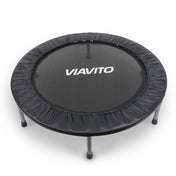More and more of us are adding yoga into our health and fitness regime, and for good reason. Yoga offers us not only psychological benefits in the form of reduced stress and greater mental clarity, but increased strength, mobility, and flexibility too.
Whether we’re at the beginning of our yoga journey or further down the road, we can all benefit from the support of some well-placed yoga props. In particular, yoga blocks are versatile, multi-purpose, and inexpensive. Yoga blocks can make all the difference in getting the most out of a stretch, whilst preventing injury.
Here we explore how a yoga block can help you, whether you’re a beginner or an advanced yogi.
How do you stretch with yoga blocks?
One of the great things about yoga blocks is that they can be used in many different ways. You can use them to adjust the height of a pose to match your body shape and flexibility levels, as well as using them for stability and balance during tougher poses. You can place yoga blocks under your hands, back, hips, and even legs – depending on the requirement of the pose.
What exercises can you do with yoga blocks?
You can use yoga blocks for a wide range of exercises, and they are not just for use during yoga. The blocks can also be used for mobility exercises, functional movement practices, as well as good posture when sitting on the floor to practice meditation or mindfulness.
When it comes to yoga, it’s easy to incorporate the blocks into many different poses including forward folds, chest openers, standing poses, and seated postures too.
What are 5 ways to use yoga blocks to improve flexibility?
- Yoga Bicycles: not only do yoga bicycles increase our core strength, but they are also an effective way of enhancing our hamstring flexibility. By using a yoga block carefully positioned between your inner thigh and elbow, you add in a strength element to the pose – activating your hip adductors and your pectoralis muscles.
- Psoas Release: this supine stretch is great at increasing your flexibility after a long day of sitting at a computer. By placing a yoga block under our lower back during this position it is possible to gently release tension in the psoas and perform an effective hip extension.
- Stability work: positions involving muscle stability can also support our flexibility by strengthening key areas in the spine and hamstrings. Using a block under our knees/ hands we can make our muscles work harder – getting us that step closer to improved flexibility.
- Chest openers: These open chested poses can alleviate the tension and stiffness of sitting slumped forward when driving or on the computer – however they can be hard to get the most out of without a little support. Strategically placing one yoga block underneath your upper back and the other under your head will create the best stretch for your upper chest.
- Seated forward folds: The ultimate stretch for hamstring flexibility is the seated forward fold. However, this pose can be inaccessible if you’re not naturally flexible or spend a lot of time running or walking. By perching on the edge of a yoga block you can increase your ability to touch your toes, and over time, this will provide you with better overall flexibility.
It’s clear that yoga blocks make a great aid to your workout – whether you are practising yoga or not – if you want an easy way to increase your flexibility, strength or mobility then adding a quality yoga block (or two) into your workout might just be the way to go.

